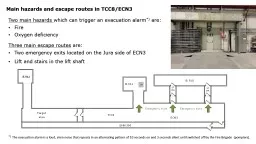PPT-Design of Distributed Factory Fire Alarm System
Author : pongre | Published Date : 2020-10-22
Kiln is the structure and site to fire and produce ceramic The property of kiln is mainly divided into civil kiln and official kiln The property of Luochong Kiln
Presentation Embed Code
Download Presentation
Download Presentation The PPT/PDF document "Design of Distributed Factory Fire Alarm..." is the property of its rightful owner. Permission is granted to download and print the materials on this website for personal, non-commercial use only, and to display it on your personal computer provided you do not modify the materials and that you retain all copyright notices contained in the materials. By downloading content from our website, you accept the terms of this agreement.
Design of Distributed Factory Fire Alarm System: Transcript
Download Rules Of Document
"Design of Distributed Factory Fire Alarm System"The content belongs to its owner. You may download and print it for personal use, without modification, and keep all copyright notices. By downloading, you agree to these terms.
Related Documents














